Wigan, Lancashire
Up to 1834
Pemberton had a workhouse from 1731, as did Wigan and Ashton-in-Makerfield from the following year (Hitchcock, 1985).
A parliamentary report of 1777 recorded local workhouses in operation in Wigan (for up to 200 inmates), Dalton (20), Pemberton (60), and Standish with Langtree (40).
The Wigan workhouse was at the north side of Frog Lane at the west of the town.
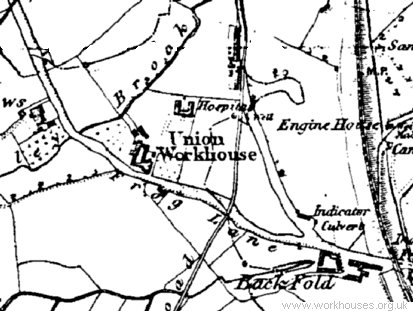
Wigan Frog Lane site, 1849.
Another workhouse stood on the Liverpool Road to the south of Hindley.
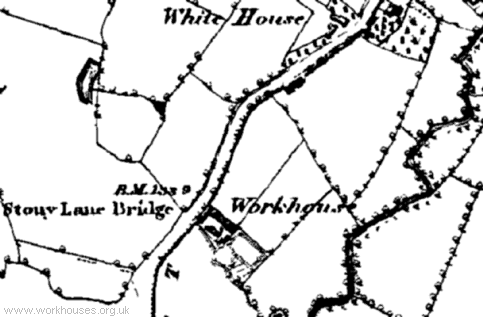
Hindley workhouse site, 1849.
After 1834
The Wigan Poor Law Union officially came into existence on 2nd February 1837. Its operation was overseen by an elected Board of Guardians, 28 in number, representing its 20 constituent parishes and townships as listed below (figures in brackets indicate numbers of Guardians if more than one):
County of Lancaster: Abram, Ashton in Mackerfield [Makerfield] (2), Aspull, Billinge Chapel End, Billinge Higher End, Blackrod, Dalton, Haigh, Hindley (2), Ince, Orrell (2), Parbold, Pemberton (2), Shevington, Standish with Langtree, Upholland, Wigan (5), Winstanley, Worthington, Wrightington.
The population falling within the Union at the 1831 census had been 58,402 with parishes in size ranging from Worthington (population 124) to Wigan itself (20,774).
Initially, the new Wigan Union made use of existing workhouse buildings on Frog Lane and at Hindley. In 1855-7, a new union workhouse was erected on the Frog Lane site. It was designed by William Mangnall who was also the joint architect of workhouses for the Barton-upon-Irwell and Oldham unions. The buildings were constructed in red brick and accommodated 574 inmates. The workhouse location and layout are shown on the 1907 map below:
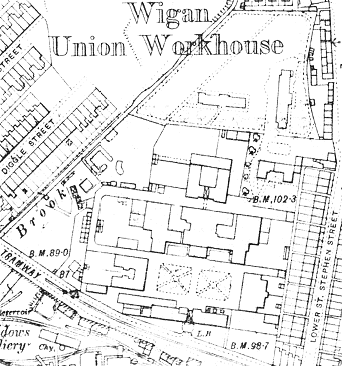
Wigan workhouse site, 1907.
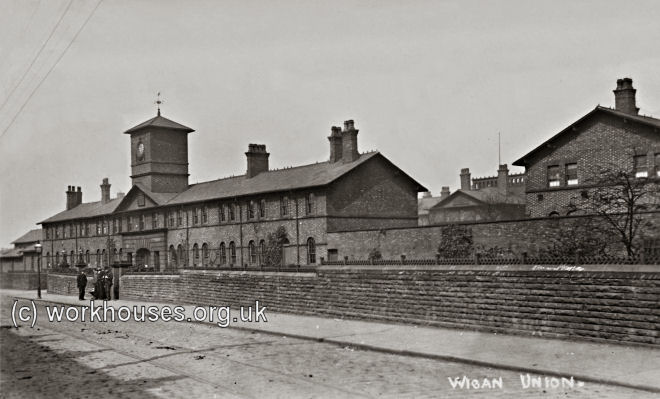
Wigan workhouse from the south-east, c.1906.
© Peter Higginbotham.
From 1930, the former workhouse became Frog Lane Public Assistance Institution providing care for the elderly and chronic sick. After the setting up of the National Health Service in 1948, it became Frog Lane Welfare Home and later as Frog Lane Hospital. It finally closed in around 1970. The buildings were demolished in the 1990s and housing now occupies the site.
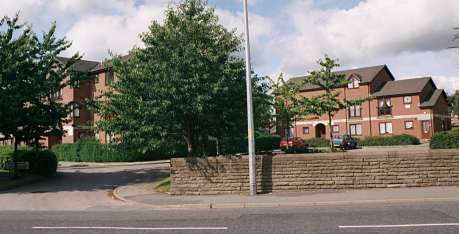
Wigan former workhouse site from the south, 2001.
© Peter Higginbotham.
Wigan Poor Law Infirmary
In 1906, Wigan Union opened a poor law infirmary on a separate site at the east side of Upholland Road.
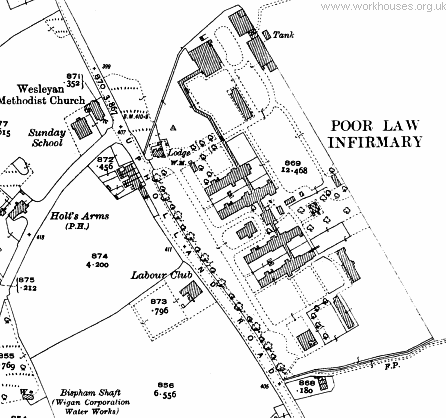
Wigan union infirmary site, 1928.
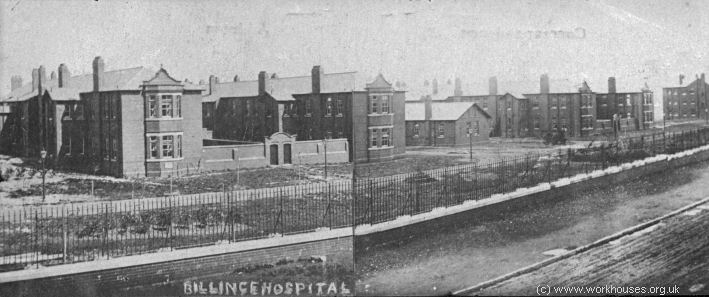
Wigan union infirmary from the west, c.1918.
© Peter Higginbotham.
The hospital later became Wigan's Billinge Hospital. It finally closed in July 2004.
Staff
Inmates
Records
Note: many repositories impose a closure period of up to 100 years for records identifying individuals. Before travelling a long distance, always check that the records you want to consult will be available.
- Wigan Archive Service, Town Hall, Leigh WN7 1DY. Holdings include: Union Infimary (Billinge Hospital) — Porter's Admission/discharge books and creed registers (1910-1953). Transcription of Infirmary Creed Register (1910-15)
- Lancashire Record Office, Bow Lane, Preston, Lancashire, PR1 2RE. Holdings include: Guardians' minutes (1837-1930); Ledgers (1836-61);
Bibliography
- Hitchcock, T.V. (1985) The English workhouse: a study in institutional poor relief in selected counties. l695-l750. (DPhil thesis. University of Oxford.)
Links
- None.
Unless otherwise indicated, this page () is copyright Peter Higginbotham. Contents may not be reproduced without permission.


